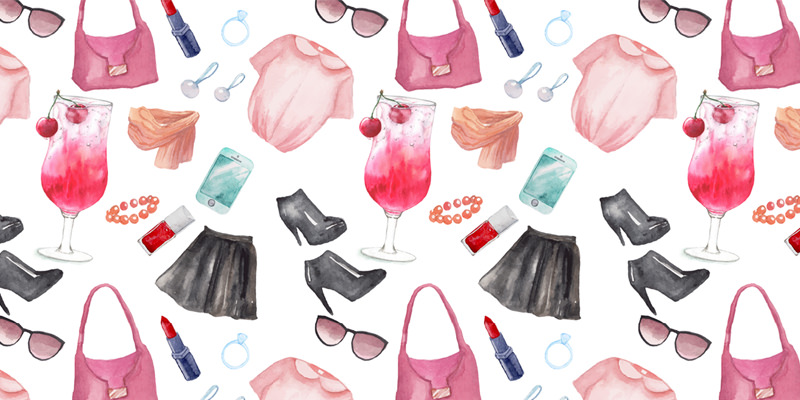Surprisingly, the creepiest thing about the recent launch of a light beer called “Precious” isn’t the name (which should be reserved for Gollum and/or the film based on the novel Push by Sapphire). It isn’t even the ingredients list, which includes an unexpected cameo by two grams of collagen per can. It’s the tagline. “Guys can tell if a girl is taking collagen or not.” Cool. Wait. What?
Women are used to being assaulted with “solutions” for the “problem” of “aging” (i.e. fighting the good chemical fight against, well, nature)—beauty magazines in the dentist’s office, ads for eye cream popping up in your Gmail, Kardashians pretty much everywhere at this point. But…in our beer? Seriously?
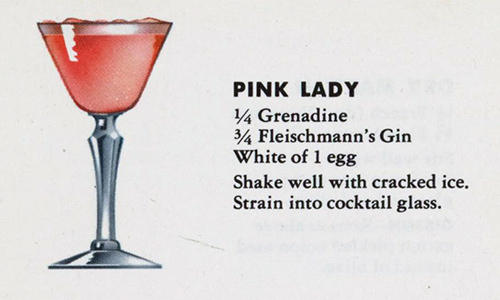
The fact that there’s a company (and not just any company, Japanese beverage megalith Suntory) that thinks it can intimidate a woman into drinking some light beer by suggesting she might want to have anything to do with the guy scrutinizing her face for fine lines is weird enough. Weirder still is the relatively calm cultural response, with female writers from Forbes to The Telegraph taking less of a “dear god” and more of a “yeah but will it work” perspective on Precious. Sure, HuffPo was appropriately indignant, but then again, the next day they published an “article” on how two attractive teenage girls in jean shorts achieved “Instagram superstardom” at Coachella (for, as it turns out, being attractive teenage girls in jean shorts). In this weird, weird world, maybe an overtly sexist, anti-ageing light beer is just what you drink?
But before we quiet down and take our serving of the Kool-Aid, er, collagen beer, the whole phenomenon begs the question: what is going on with chick drinks these days? Is this really the state of affairs?
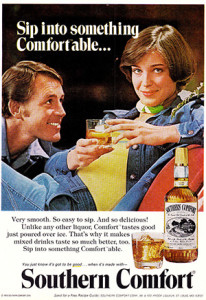
That chick drinks are still very much a thing isn’t really in doubt. If you’ve been to the liquor store recently, chances are you’ve seen at least one or two beverages marketed specifically to the ladies: Little Black Dress, Mommy Juice, Sweet Bitch (yes, that’s a thing). But they also aren’t a new phenomenon. Since before the days of Zima, women were being sold on a certain way of drinking. And these drinks weren’t always lower ABV. In fact, in 1951, the gin-packed, grenadine-hued Pink Lady cocktail was sold as a kind of secret way for girls to go wild (alas, with no one there to film them back then). Then president of the Bartender’s Union of New York, Jack Townsend described the Pink Lady as the drink for the kind of woman who’s “so courteous but always seems so timid. She’s the one who sort of reminds you of your aunt, so quiet.”
Like wine coolers and SoCo in the years that followed it, The Pink Lady was the kind of drink intended to help the good girl blur her lines a bit, all without seeming to know what she’s doing. As Townsend fancifully suggested in 1951, “It’s quite possible she has seen the decorative and innocuous-appearing pink-and-white amalgamation passing on a waiter’s tray and decided, ‘Hmmm, that couldn’t do me any harm.’” See? Precious isn’t some kind of trend-setter. Chick drinks have been creepy for decades.
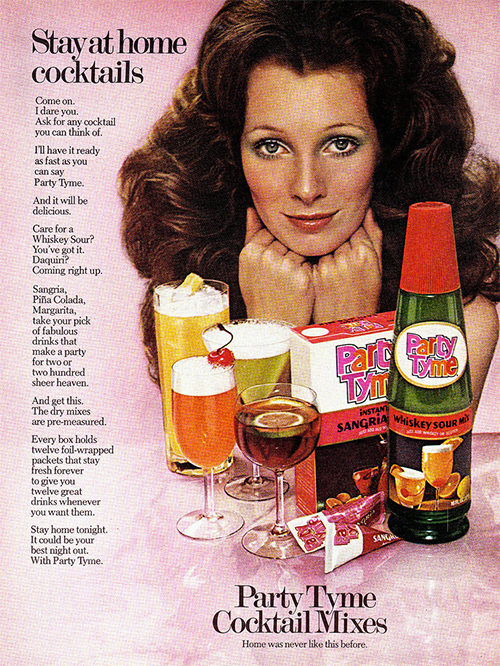
In fact, what’s changed isn’t the concept of chick drinks—or some semi-marginalizing sense that women should drink and/or be marketed to differently (despite our best efforts to argue the contrary). What’s changed is the ownership women are taking on both sides of the alcohol beverage market. All signs point to women drinking and making more alcohol. And yes, while some signs point to ladies drinking more stereotypical “chick drinks”—a March 2015 Nielsen study found that “women enjoy flavored alcoholic beverages much more than men,” with only 27% of female respondents claiming they don’t like the stuff—there’s as much of an increase elsewhere. A long term Gallup poll found a significant uptick in wine consumption by women between 1994 to 2012 (up from 43 to 52%), while another recent Nielsen study found women (and Hispanics) are buying more whiskey generally.
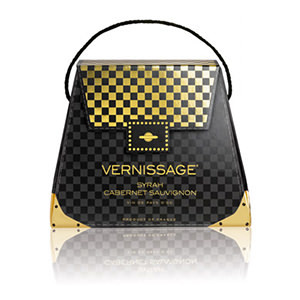 Though yes, self-styled “chick drinks” seem to be enjoying a recent boom in marketing. Nielsen’s alcohol and beverage VP Danny Brager reports that “[s]ales for those brands jumped by 57 percent from 2011 to 2012.” And even the most superficial tour of the Ladies Liquor Cabinet reveals a slew of aggressively gender-ized brands with their own respective “Ick” factors: the aforementioned Precious (collagen, ‘nuf said); “Mommy” brands like Mommy’s Time Out and Mommy Juice (beyond using the term “mommy,” phrases like “Moderate tannins make this a wonderful wine to drink while the kids are sleeping.”); Little Black Dress (how about how two of three pairing recommendations are for salad?); Girls Night Out (an actual little black dress on the Chardonnay label); Vernissage (purse-shaped wine, and the phrase “A woman’s touch has propelled the Bag-in-Bag wine from the practical to the elegant.” Happy 1952, everyone.); “Sofia” (“stylish pink” 187 mL cans of sparkling Sofia Blanc de Blancs from the Coppola winery, Ick factor being, Come on, Coppola, you’re better than that! Apocalypse Now!); and of course the Skinny Girl brand, whose ick factor—beyond the Barbie-proportioned silhouette on the bottle—is probably just the dead, dull thud of marketing language like this: “A lady knows the rules…Drink like a lady.”
Though yes, self-styled “chick drinks” seem to be enjoying a recent boom in marketing. Nielsen’s alcohol and beverage VP Danny Brager reports that “[s]ales for those brands jumped by 57 percent from 2011 to 2012.” And even the most superficial tour of the Ladies Liquor Cabinet reveals a slew of aggressively gender-ized brands with their own respective “Ick” factors: the aforementioned Precious (collagen, ‘nuf said); “Mommy” brands like Mommy’s Time Out and Mommy Juice (beyond using the term “mommy,” phrases like “Moderate tannins make this a wonderful wine to drink while the kids are sleeping.”); Little Black Dress (how about how two of three pairing recommendations are for salad?); Girls Night Out (an actual little black dress on the Chardonnay label); Vernissage (purse-shaped wine, and the phrase “A woman’s touch has propelled the Bag-in-Bag wine from the practical to the elegant.” Happy 1952, everyone.); “Sofia” (“stylish pink” 187 mL cans of sparkling Sofia Blanc de Blancs from the Coppola winery, Ick factor being, Come on, Coppola, you’re better than that! Apocalypse Now!); and of course the Skinny Girl brand, whose ick factor—beyond the Barbie-proportioned silhouette on the bottle—is probably just the dead, dull thud of marketing language like this: “A lady knows the rules…Drink like a lady.”
The fact that wines seem to dominate the chick drinks category isn’t a coincidence: women drink more wine generally, with Gallup reporting that by 2013 “52% [of women] say they drink wine most often, while 24% say liquor and 20% beer.” Dr. Liz Thach is a Management and Wine Business Professor at Sonoma State University (she’s also the first female Master of Wine in California), and she recently explained to us that “women have always drunk more wine than men. In fact, women buy more wine than men in the U.S.” The only reason it’s getting more attention culturally (e.g. female TV characters holding massive wine goblets like scepters) is because “wine has become more trendy,” says Thach.
Yes, men buy the wines, the way they might also wander into a Victoria’s Secret and blush among the panties – until a salesperson realizes there’s a dude among the panties.
And while men are actually drinking more thanks to the trendiness, “women still drink the most wine and purchase the most wine, 60 to 80 percent.” As for why wineries are dressing the product up, so to speak, and “coming out with labels targeted to women is that they realize there’s a consumer segment among women that appreciates these labels,” says Thach. “I talked with some of the brand managers who created these wines, and yes, 90 percent of the people who purchase these wines are women, it’s who they’re targeted to.” Yes, men buy the wines, the way they might also wander into a Victoria’s Secret and blush among the panties – until a salesperson realizes there’s a dude among the panties. “It’s mainly as a gift,” says Thach.
The real story underlying chick drinks isn’t that they still exist, or that marketing has become more aggressively fabulous. It’s that women are drinking more generally. A study just published by the Institute for Health Metrics and Evaluation at the University of Washington found heavy drinking and binge drinking rates are up 17.2% and 8.9% respectively, with women making up a large proportion of the increase (“heavy drinking” for a woman is more than one drink a day, on average, per month). Coincidence (or opportunism), the push to market to women is on the rise, something David Jernigan of the Center on Alcohol Marketing and Youth at Johns Hopkins has been paying careful attention to (since roughly the late 1990s, when he says marketing began to be geared toward women in the U.S.) “If the level of marketing gets to the same intensities as it is for men,” he told News Works last April, “because of the biological differences, the harms will be greater for women than they are for men.”
On the other hand, Julie Gunlock of the Culture of Alarmism project at the Independent Women’s Forum called it sexist, “or at the very least an exaggeration to say that women are victimized by this marketing.” This is, after all, an age where groups like Ladies Who Lush and Whiskey Women are trying to “redefine the norm that has been handed to us by men” (presumably by drinking non-flavored, well-aged, leather-couch-worthy whiskies while not watching Sex and the City).
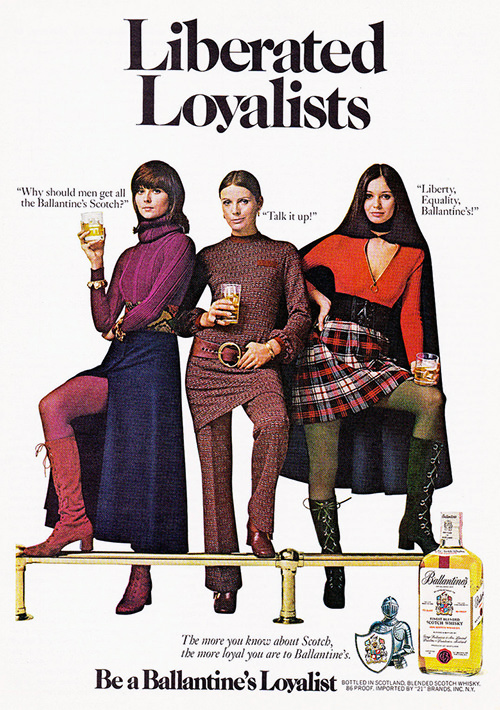
Women seem to be intentionally and collectively defining their own drinking habits, which, again, appear to be increasing. (Hence another, more recent uptick in women-on-the-wagon clubs?) In such a context, the question what women are drinking, and whether it’s sexist or lazily marketed or comes with a free push-up bra, begins to pale in comparison to why.
Meanwhile, at least we can all agree that if Precious is any indicator, 2015 is gonna be a weird and highly stereotyped year for females and alcohol marketing. So hopefully someone out there finally makes a drink that actually helps with self-esteem…
Emily has been writing about food, drink, and the culture and politics thereof for several years now – despite all of which, she is still weirdly hungry and thirsty.

